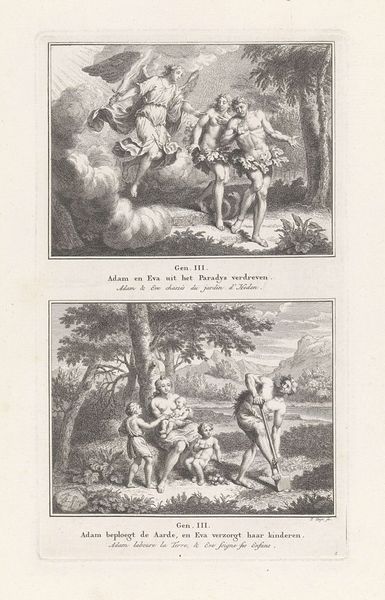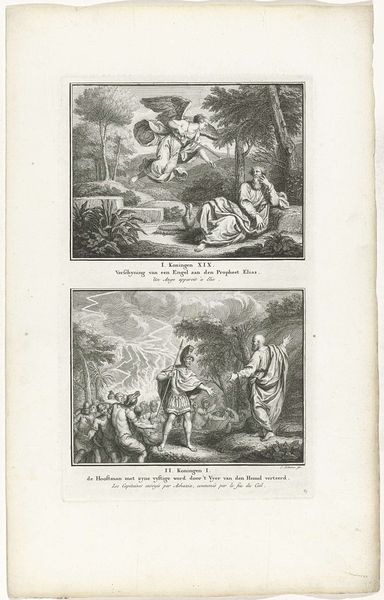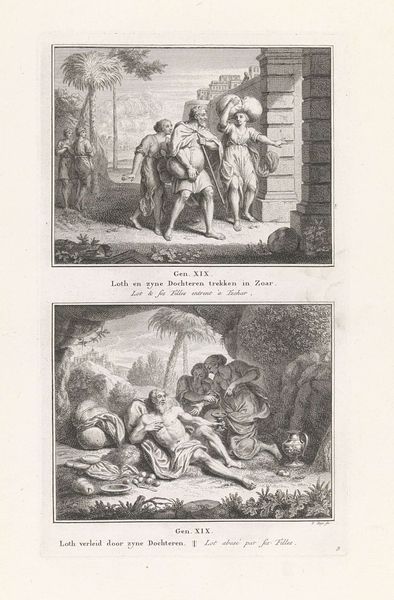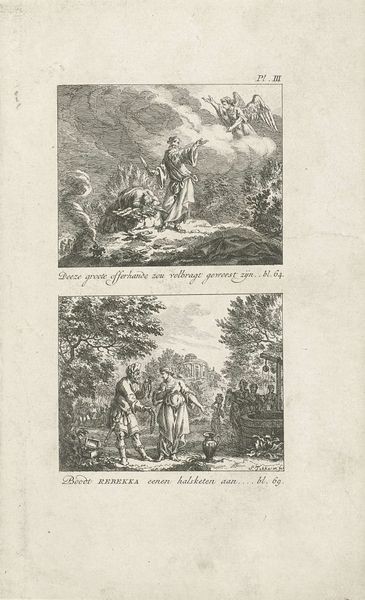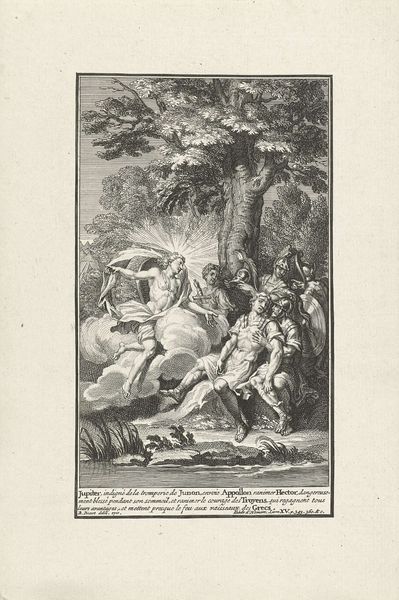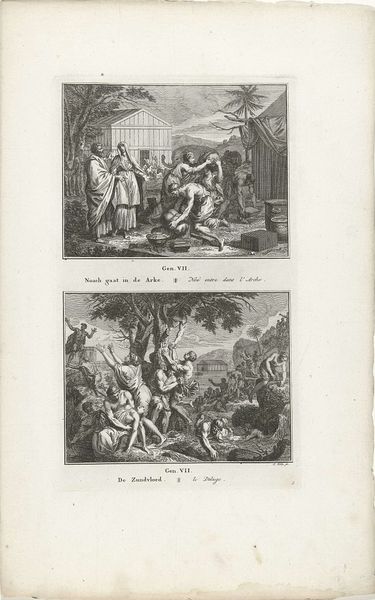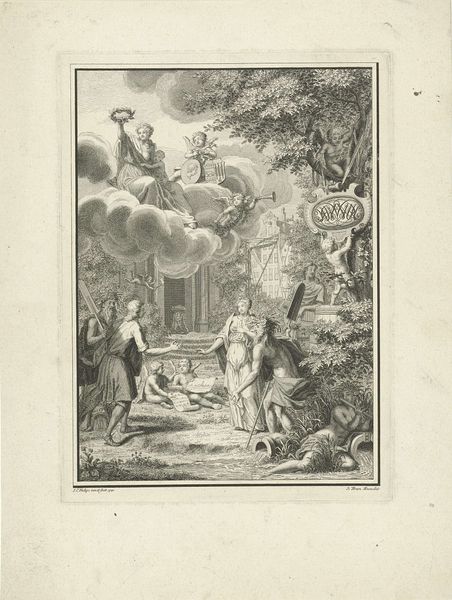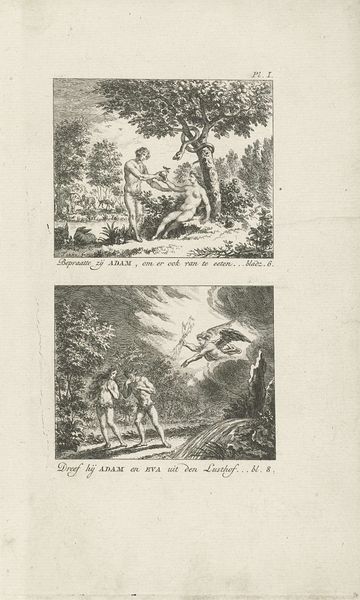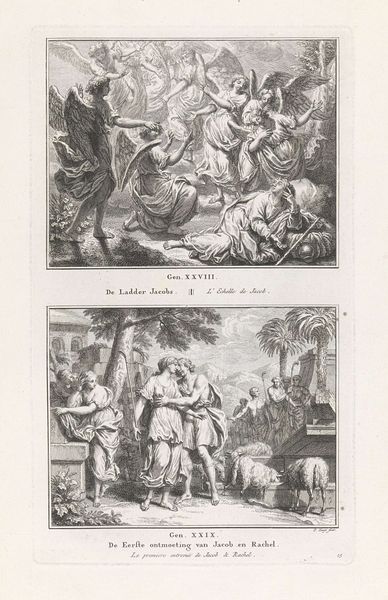
Kaïn vlucht na de moord op Abel / Adam en Eva bewenen Abel 1716 - 1791
0:00
0:00
pietertanje
Rijksmuseum
print, etching, engraving
#
pencil drawn
#
narrative-art
#
baroque
# print
#
etching
#
old engraving style
#
figuration
#
pencil drawing
#
line
#
history-painting
#
engraving
Dimensions: height 325 mm, width 195 mm
Copyright: Rijks Museum: Open Domain
Curator: Before us, we have "Kaïn vlucht na de moord op Abel / Adam en Eva bewenen Abel" by Pieter Tanjé, made sometime between 1716 and 1791. It's an engraving currently held at the Rijksmuseum. Editor: The composition immediately strikes me. It’s stark, really – the hard lines of the engraving, the raw emotion on their faces... the scene practically vibrates with grief and guilt. Curator: Note how the composition is bisected; the upper scene depicting the aftermath of Abel’s murder and Cain’s flight, and below, Adam and Eve’s lament. The narrative structure itself is quite elegant. The use of line creates a dramatic chiaroscuro effect. Editor: And those lines, the material execution of the print—look how starkly the narrative unfolds, rendered through acid and labor-intensive methods. Tanjé clearly wants us to confront the manual craft that reproduces such potent stories, questioning the mediation. The stark lines aren’t just about light and shadow, they’re evidence of a demanding production process. Curator: Indeed. And within the figures, we see an idealization, almost neoclassical in their forms. However, Tanjé uses the dramatic possibilities inherent in the line to accentuate the raw emotion, pulling away from perfect, cold classicism towards the more emotionally demonstrative baroque. Consider Eve’s gesture, it has weight but it also seems contrived. Editor: Contrived maybe, but what about the material constraints shaping those aesthetic choices? Think about the role that printing workshops played in disseminating these stories. How Tanjé is participating, through mass reproducible labor, in shaping morality. It is clear his mark making underscores not only the biblical scene but the labor involved in reproducing its story. Curator: You raise a fascinating point about the accessibility afforded by prints. It democratizes narratives but it is certainly through very crafted labor. It makes you think about authorship, what did Tanjé want this composition to mean? Editor: Perhaps that’s exactly the question. As a reproducible form, Tanjé probably knew his control over its meanings was limited once distributed through the workshops. He gave up singular authority on its reception when he chose etching. Curator: That's a valuable insight into understanding prints and narrative as social. Thanks for making me think more deeply about the engraving's form and function. Editor: And thank you, your highlighting of the classical elements made the context really shine through.
Comments
No comments
Be the first to comment and join the conversation on the ultimate creative platform.
